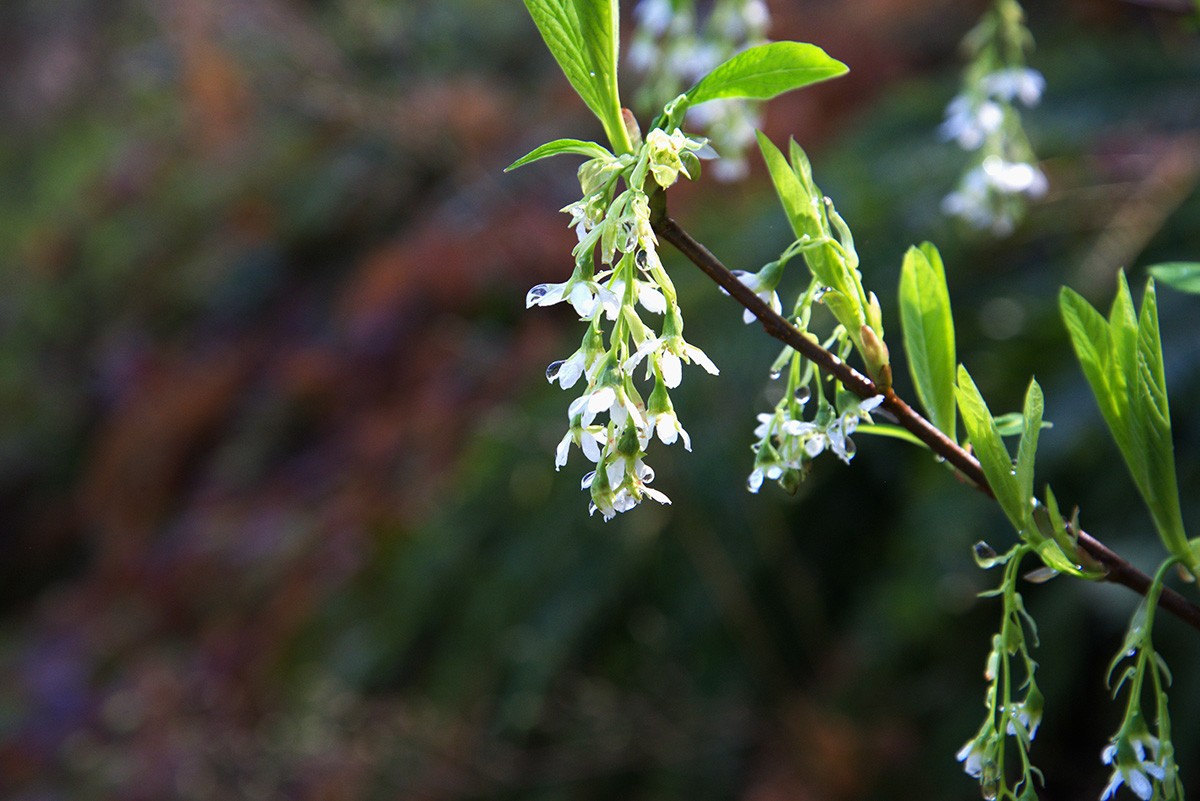
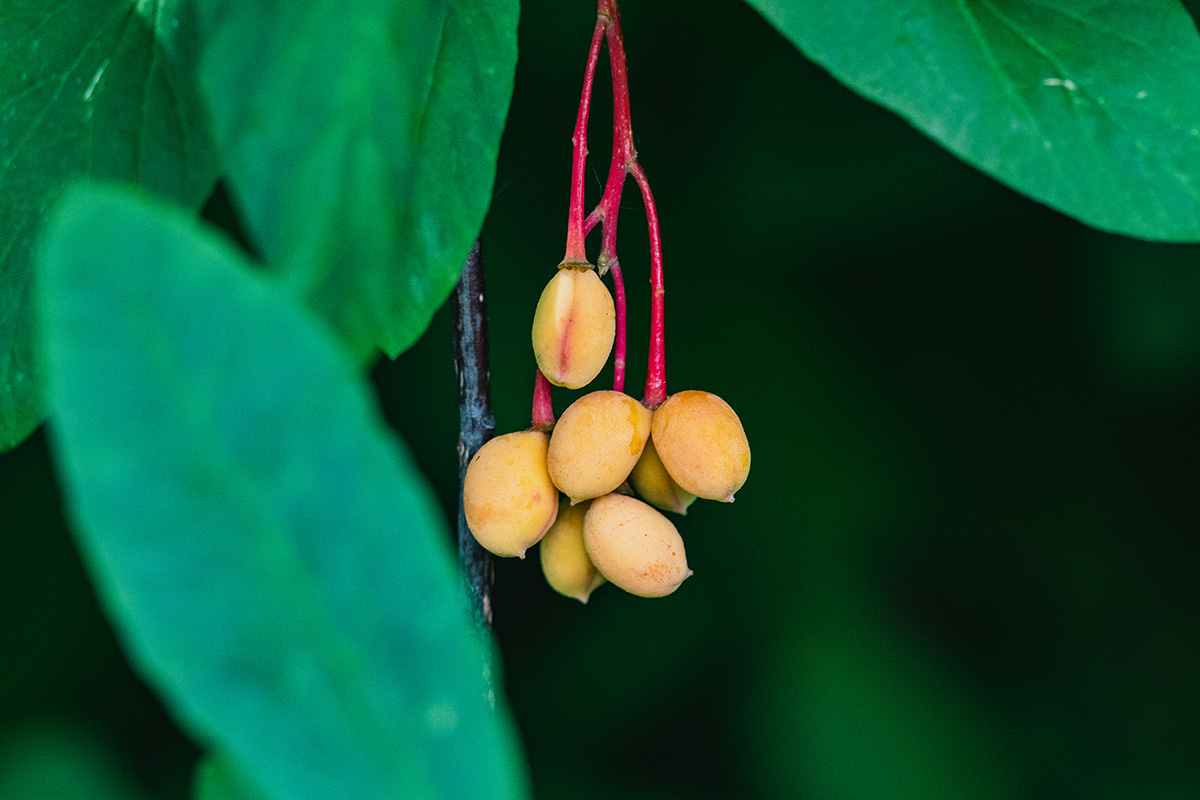
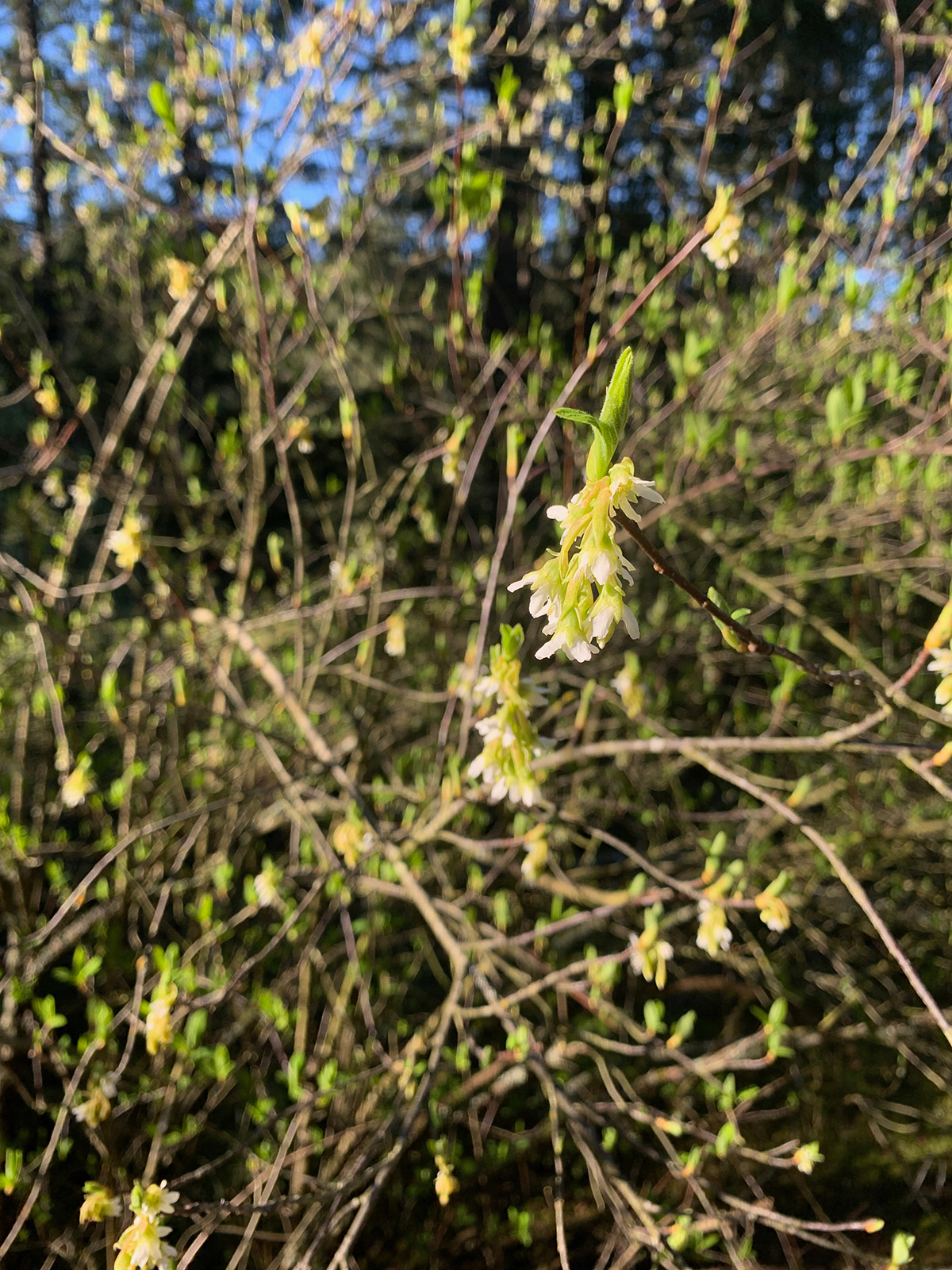
June Plum
Alternate, deciduous shrub
Common Names: Oso Berry. Formerly known as Indian Plum.
Species: Oemleria cerasiformis
Plant Family: Rosaceae
Zone: 6-10
BEC Zones: CDF
Height: 1.5m-3 meters
Width: Up to 3.5 metres
Conditions
Sun: Full sun to part shade
Soil: Average; well-drained, organically rich loam or humus soil types
Moisture: Dry to moist
Exposure: Open woods, open areas, roadsides, ditches, riparian areas, low elevations, moist stream sides
Appearance
Shape & Stem: Stems clumped, arching; pith chambered; bark bitter tasting; purplish-brown.
Leaf: Alternate, deciduous, lanceolate to oblong-egg-shaped or elliptic, short-stalked; stalks 5-10 mm long, the blades 5-12 cm long, not toothed, pale green and smooth above, paler and often sparsely hairy below; crushed leaves smell like cucumber.
Flower: Inflorescences loose, drooping as they mature, bracted, 5-10-cm long clusters, at the ends of short axillary branchlets, of several (5-10) stalked flowers; male and female flowers on separate plants, appearing very early in the year, as the leaves develop. Five petals, egg-shaped, 5-6 mm long, spreading. Dioecious.
Fruits: Fleshy drupes, like small plums with a large stone, about 1 cm long, orange-peach coloured, ripening to bluish-black with a whitish bloom, 1-5 per female flower; seeds 1 per drupe. Fruit ripening April – May. Favoured by birds, bees and other wildlife.
Bloom: February – April
More Information
Maintenance & Pruning: Although June plum is drought-tolerant, periodic watering during establishment is necessary. Deep watering may not be necessary due to its shallow, spreading root growth. Short longevity and fairly fast growing.
Landscape Use: Ideal for planting in woodland gardens, open spaces such as parks; effectively used for land reclamation and seasonally wet ditches. It is often associated with red-osier dogwood, blue elderberry and snowberry. At its best in early spring as it blooms, and tends to fade into the background after the ‘plums’ have dropped or been eaten, but a nice structural plant for woodland edge gardens. It’s drought-tolerant during summer months. Recommended planting density: 1-2m apart.
Propagation: Softwood cuttings best in June; semi-hardwood cuttings good done in July-August; suckers and plant divisions successful in late winter. Seed is best sown in autumn and stratified over winter. Seeds should be stored in sealed containers at 2-4º C.
Pests, Animals & Diseases: Extremely pollinator-friendly for spring bees. Deer-resistant, late-blooming, salt-tolerant. Seed heads used by birds over winter.
Cultivars: None found
Comments: One of the first shrubs to bloom in the spring – always a delight. Ranges from British Columbia to Santa Barbara County, California; west of the Rocky Mountains.
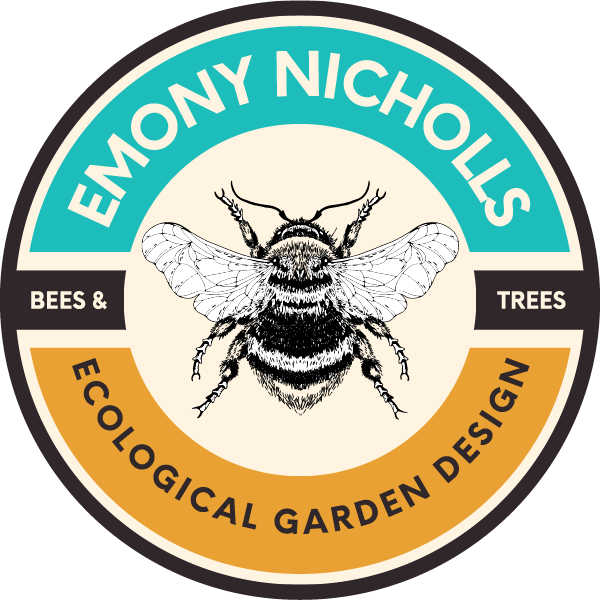

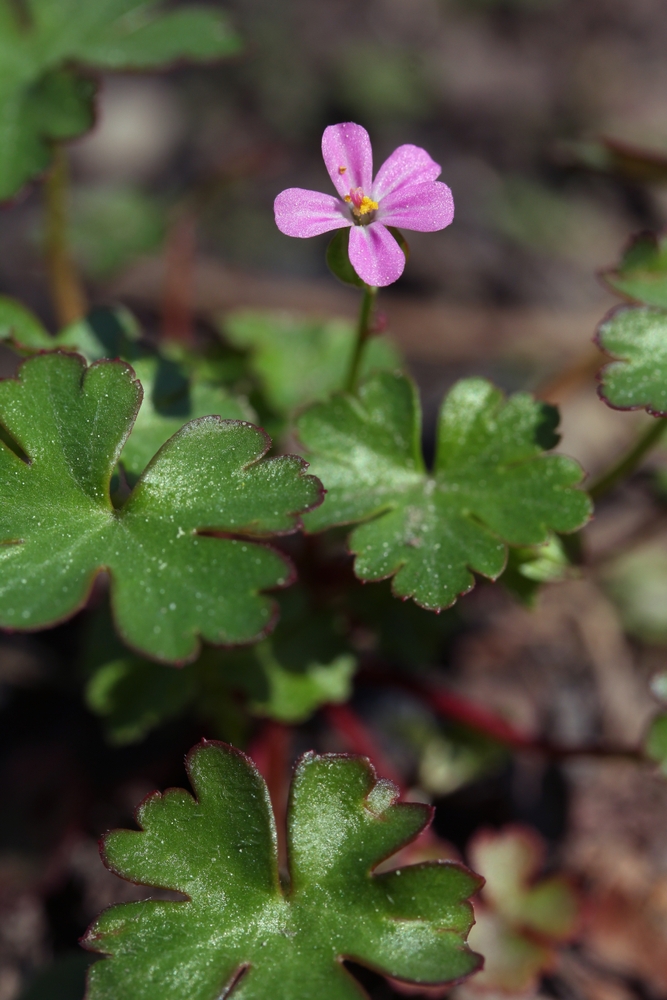
Leave a Reply